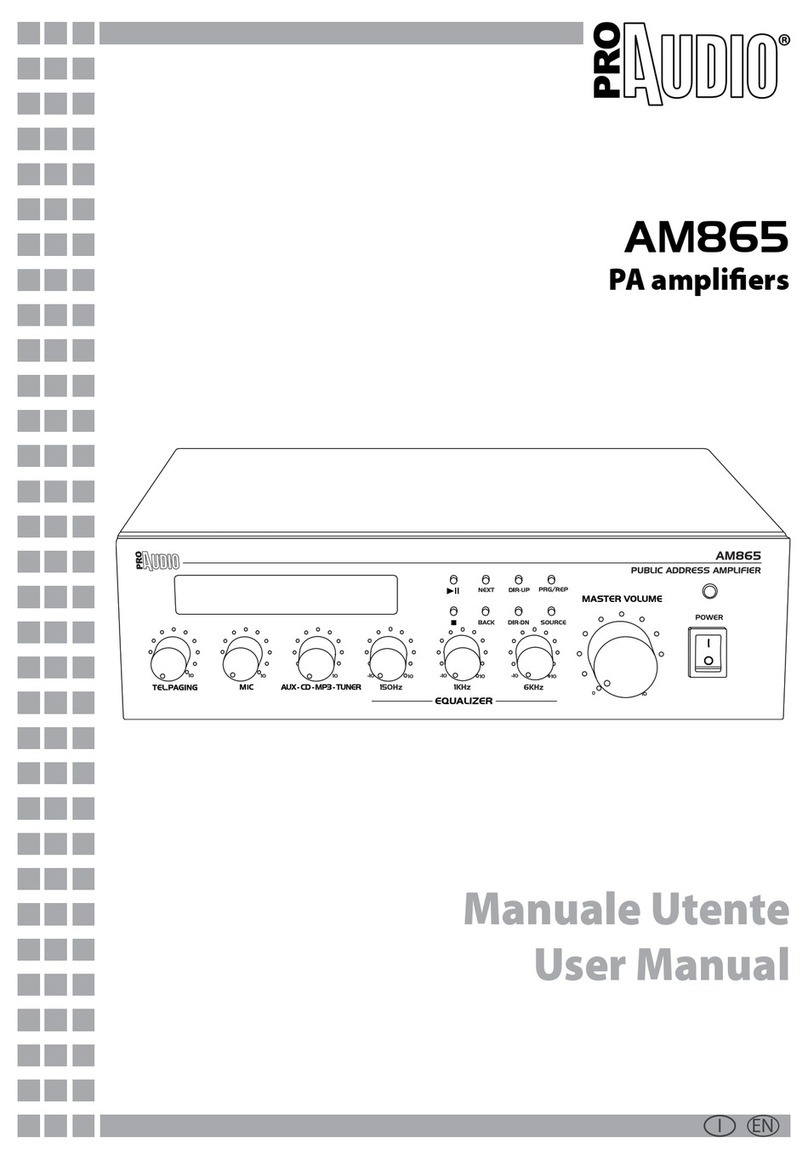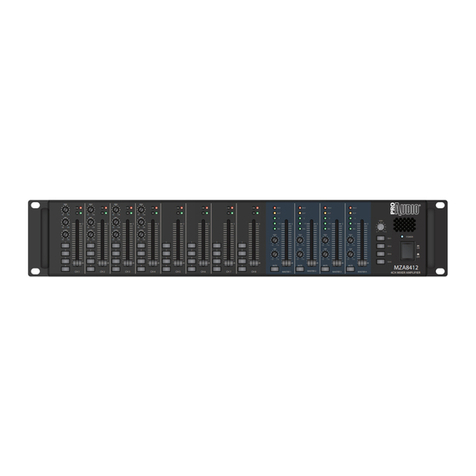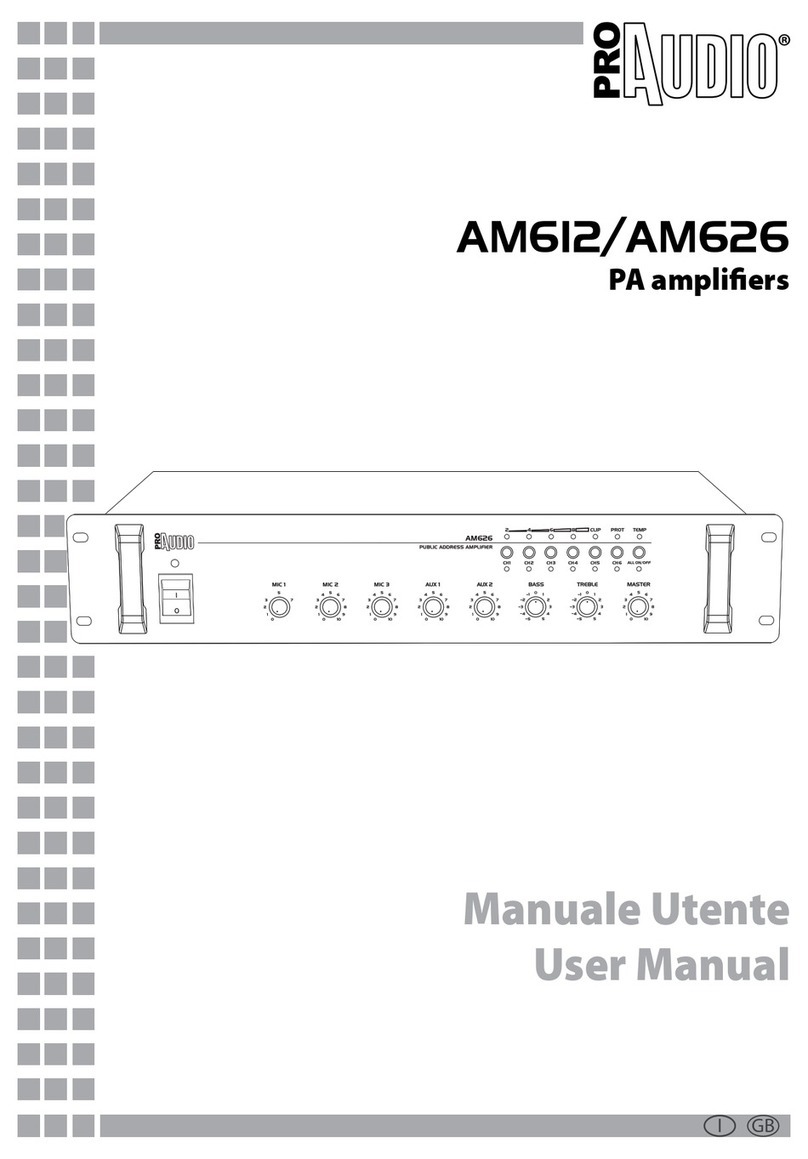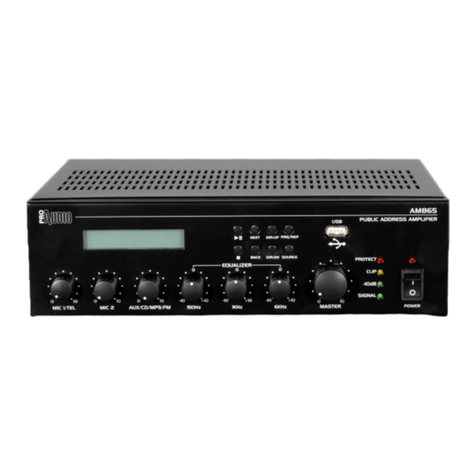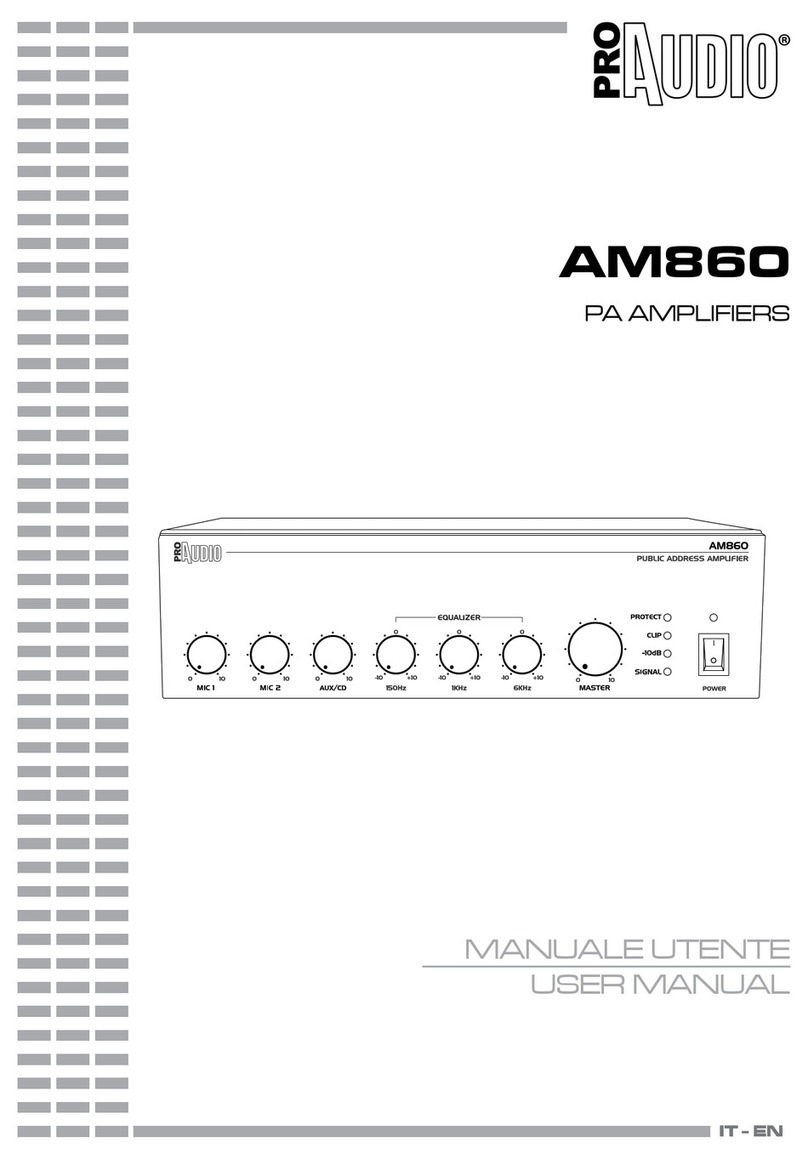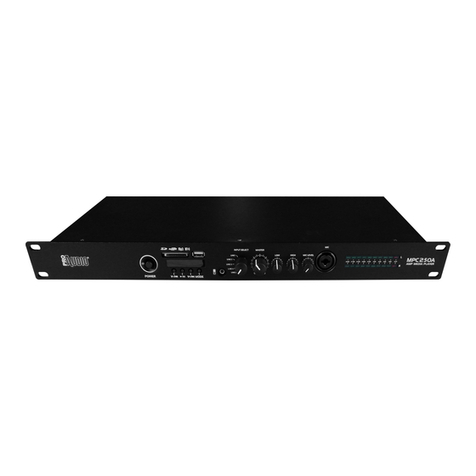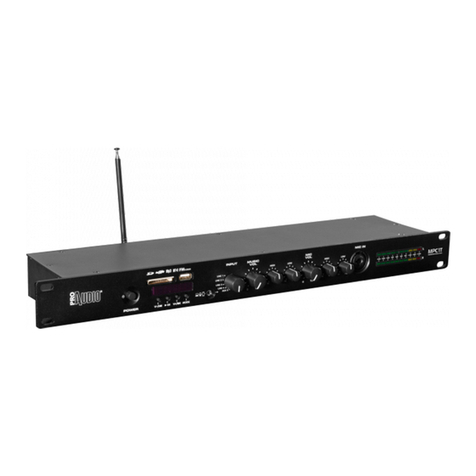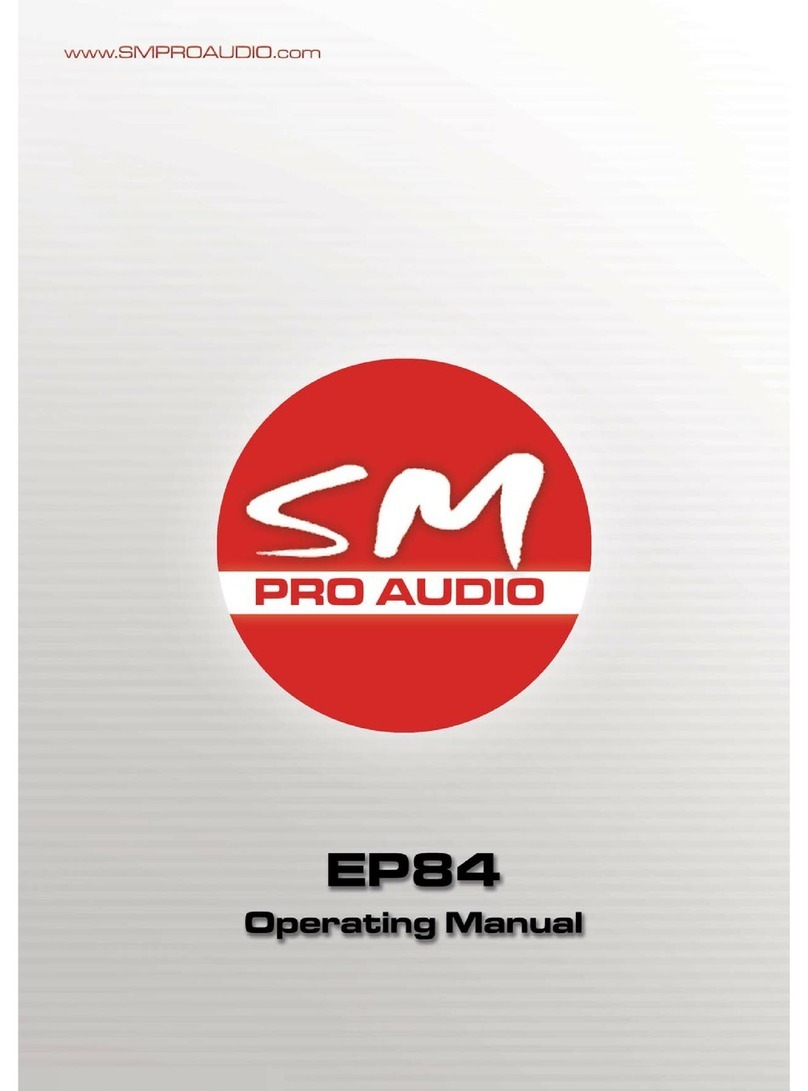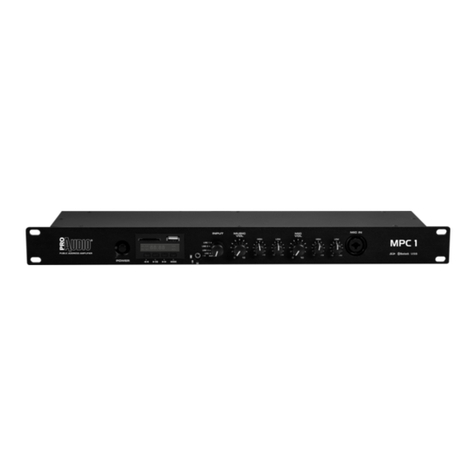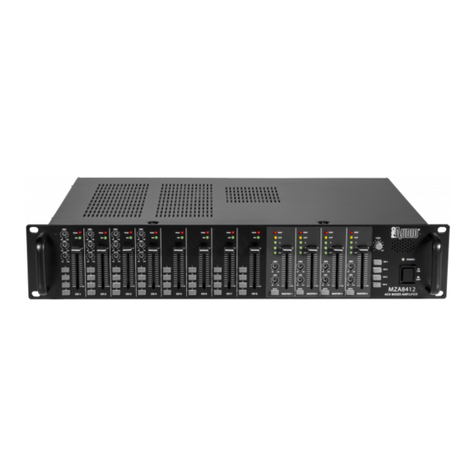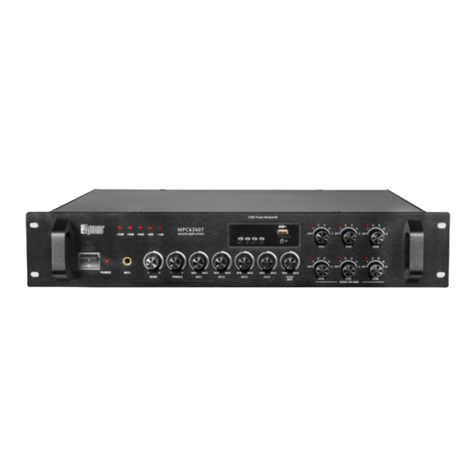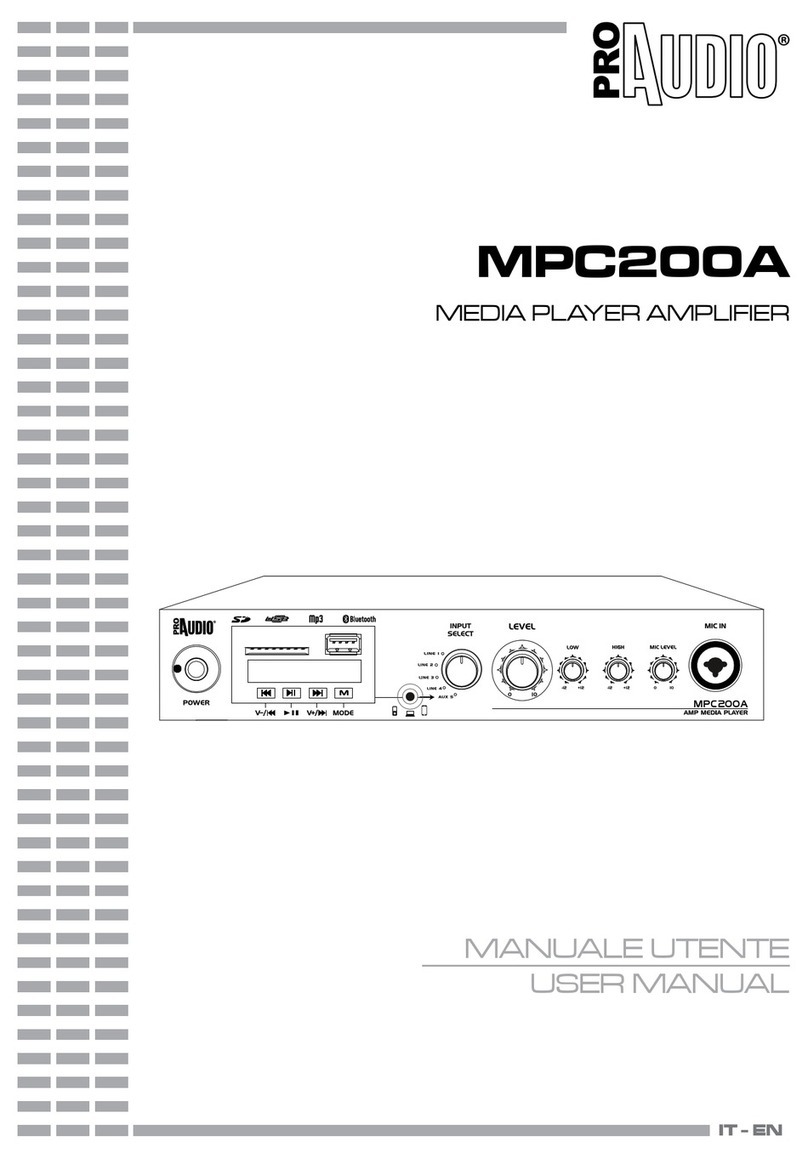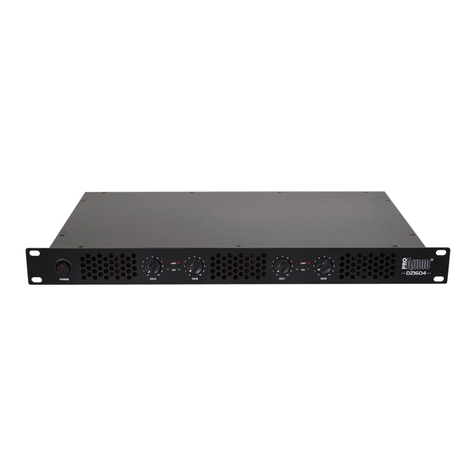
4MPC400A ENIT
Before carrying out any operations with the unit,
carefully read this instruction manual, and keep it
with cure for future reference.
It contains important information about the
installation, usage and maintenance of the unit.
SAFETY
General instruction
• The products referred to in this manual con-
form to the European Community Directives
and are therefore marked with .
• The unit is supplied with hazardous network
voltage (230V~). Leave servicing to skilled
personnel only. Never make any modica-
tions on the unit not described in this in-
struction manual, otherwise you will risk an
electric shock.
• Connection must be made to a power supply
system tted with ecient earthing (Class I
appliance according to standard EN 60598-
1). It is, moreover, recommended to protect
the supply lines of the units from indirect
contact and/or shorting to earth by using ap-
propriately sized residual current devices.
• The connection to the main network of elec-
tric distribution must be carried out by a
qualied electrical installer. Check that the
main frequency and voltage correspond to
those for which the unit is designed as given
on the electrical data label.
• This unit is not for home use, only profes-
sional applications.
• Make certain that no inammable liquids,
water or metal objects enter the xture.
• Do not dismantle or modify the xture.
• All work must always be carried out by quali-
ed technical personnel. Contact the nearest
sales point for an inspection or contact the
manufacturer directly.
• If the unit is to be put out of operation deni-
tively, take it to a local recycling plant for a
disposal which is not harmful to the environ-
ment.
SICUREZZA
Avvertenze generali
• I prodotti a cui questo manuale si riferisce sono
conformi alle Direttive della Comunità Euro-
pea e pertanto recano la sigla .
• Il dispositivo funziona con pericolosa tensione
di rete 230V~. Non intervenire mai al suo in-
terno al di fuori delle operazioni descritte nel
presente manuale; esiste il pericolo di una sca-
rica elettrica.
• È obbligatorio eettuare il collegamento ad
un impianto di alimentazione dotato di un’ef-
ciente messa a terra (apparecchio di Classe I
secondo norma EN 60598-1). Si raccomanda,
inoltre, di proteggere le linee di alimentazione
delle unità dai contatti indiretti e/o cortocircui-
ti verso massa tramite l’uso di interruttori die-
renziali opportunamente dimensionati.
• Le operazioni di collegamento alla rete di
distribuzione dell’energia elettrica devono
essere eettuate da un installatore elettrico
qualicato. Vericare che frequenza e tensione
della rete corrispondono alla frequenza ed alla
tensione per cui l’unità è predisposta, indicate
sulla targhetta dei dati elettrici.
• L’unità non per uso domestico, solo per uso
professionale.
• Evitare che nell’unità penetrino liquidi inam-
mabili, acqua o oggetti metallici.
• Non smontare e non apportare modiche
all’unità.
• Tutti gli interventi devono essere sempre e
solo eettuati da personale tecnico qualica-
to. Rivolgersi al più vicino centro di assistenza
tecnica autorizzato.
• Se si desidera eliminare il dispositivo deniti-
vamente, consegnarlo per lo smaltimento ad
un’istituzione locale per il riciclaggio.
WARNING!
Prima di effettuare qualsiasi operazione con
l’unità, leggere con attenzione questo manuale
e conservarlo accuratamente per riferimenti
futuri. Contiene informazioni importanti riguardo
l’installazione, l’uso e la manutenzione dell’unità.
ATTENZIONE!
